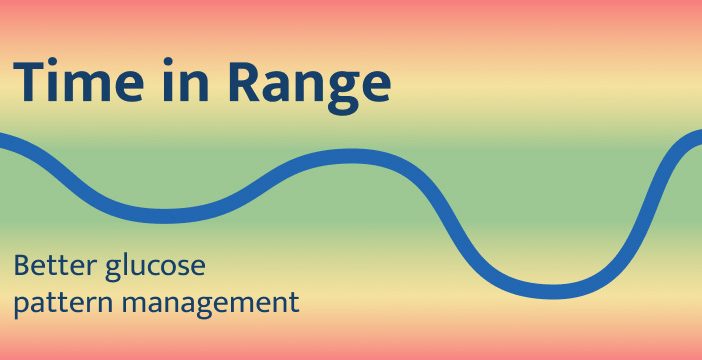
Understanding glucose control has traditionally included an A1C blood test (which measures the 3-month average blood glucose) in combination with self-monitored blood sugars, using a fingerstick blood sample and a blood glucose monitor.
Target levels for most people with diabetes are:
- A1C: 7% or lower
- Fingerstick blood glucose:
- Before meals: between 4 and 7 mmol/L
- 2 hours after the start of meals: between 5 and 10 mmol/L. You and your healthcare team use this information to make changes to your diabetes management to achieve target levels. There are, however, limitations to these measurements of glucose. A1C measures how you have done over the last 3 months. When changes are made, you must wait another 3 months to assess the effect of the changes. Fingerstick glucose measures your level for 1 second of the day, at the time the blood sample is taken. It is not able to tell you anything outside of that 1 second, such as how you arrived at that glucose level. It will miss any high glucose (hyperglycemia) or low glucose (hypoglycemia) levels you may have had previously.
With the introduction of continuous glucose monitoring (CGM), all of this is about to change. CGM measures your glucose level every 1 minute through a sensor inserted under your skin. Every glucose measurement is stored and provides data in order to create reports. To use any report from a CGM system, the sensor must be worn for at least 14 days and be active at least 70% of the time. A1C levels will always remain a part of understanding your diabetes; however, using the data from CGM, we can now start to use different measures of your glucose control.
Let’s talk about ‘time in range’
Recent international guidelines recommend that time in range (TIR) for most adults with type 1 or type 2 diabetes should be 70%. What is that range? The recommendation is that glucose should be between 3.9 and 10 mmol/L, as much as possible. This is considered to be a normal range for glucose levels in those living with diabetes.
Why is TIR important?
Studies have shown that TIR of 70% can prevent or delay complications of diabetes, both for small blood vessels (such as the eyes) and large vessels (including the heart). The more time spent in the target range, the lower the risk of all complications.
Do all people with diabetes have the same TIR targets?
Sometimes TIR goals might change. There may be a lower TIR for people who are frail, elderly or at higher risk of hypoglycemia, or a higher TIR for someone who is pregnant.ii
You and your healthcare team can work together to find the right TIR target for you.
The time in range report also includes time below range (TBR), which indicates hypoglycemia, and time above range (TAR), which indicates hyperglycemia.
How is TIR helpful for those at risk for hypoglycemia?
It is an important part of diabetes management to avoid hypoglycemia as much as possible to keep you safe. TBR <3.9 mmol/L is considered hypoglycemia. Guidelines suggest that less than 4% of the day should be spent below 3.9 mmol/L. 1% equals 15 minutes of time.
How is TIR useful for hyperglycemia?
Hyperglycemia is defined as glucose levels above 10.0 mmol/L. Guidelines suggest that less than 25% of the day should be spent in this range.
Hyperglycemia increases the risk of complications.
Understanding that your blood glucose levels are above your target can help you work towards reducing TAR through lifestyle or medication changes.
How do you make sense of TIR measurements from the data that is collected?
TIR is a very easy report to understand. It is colour coded, indicating that green is good, red is not and yellow is caution – just like a traffic light. When reviewing this report, you want to see more green and less red. It’s very simple! Unlike the A1C test, which takes 3 months, you can use your TIR report to see the benefits of any changes in diabetes management much sooner.
If you have diabetes, speak with your healthcare team to learn more about how to measure your TIR.
This content has been sponsored by Novo Nordisk.

